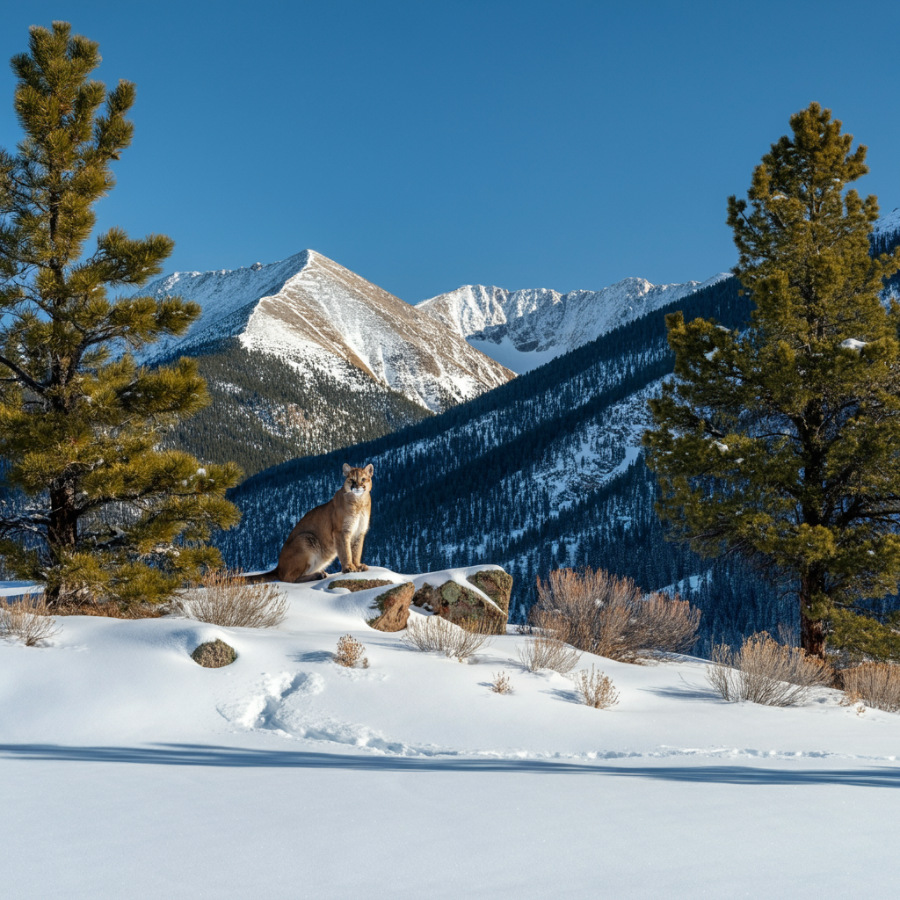Cart
26 min read
What to Do When You Encounter a Wolf in the Wild
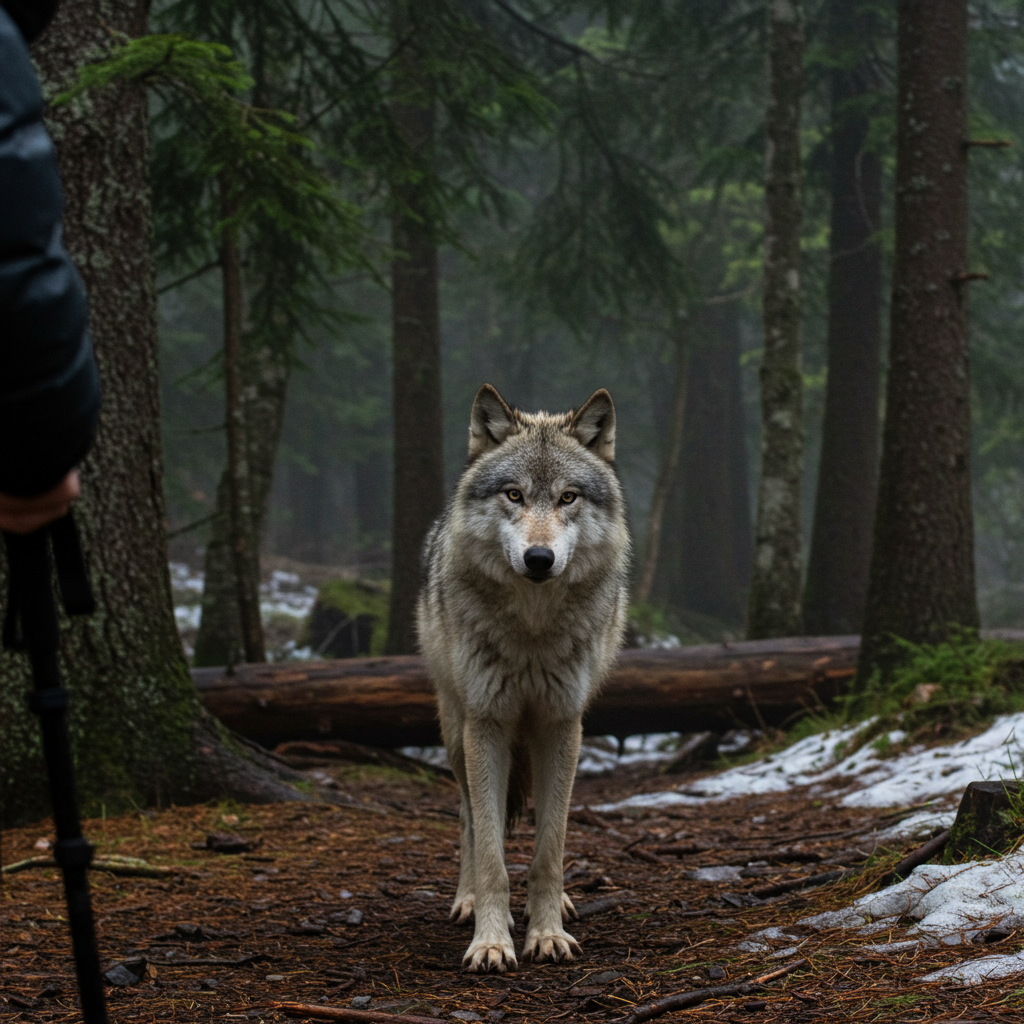
What to Do When You Encounter a Wolf in the Wild
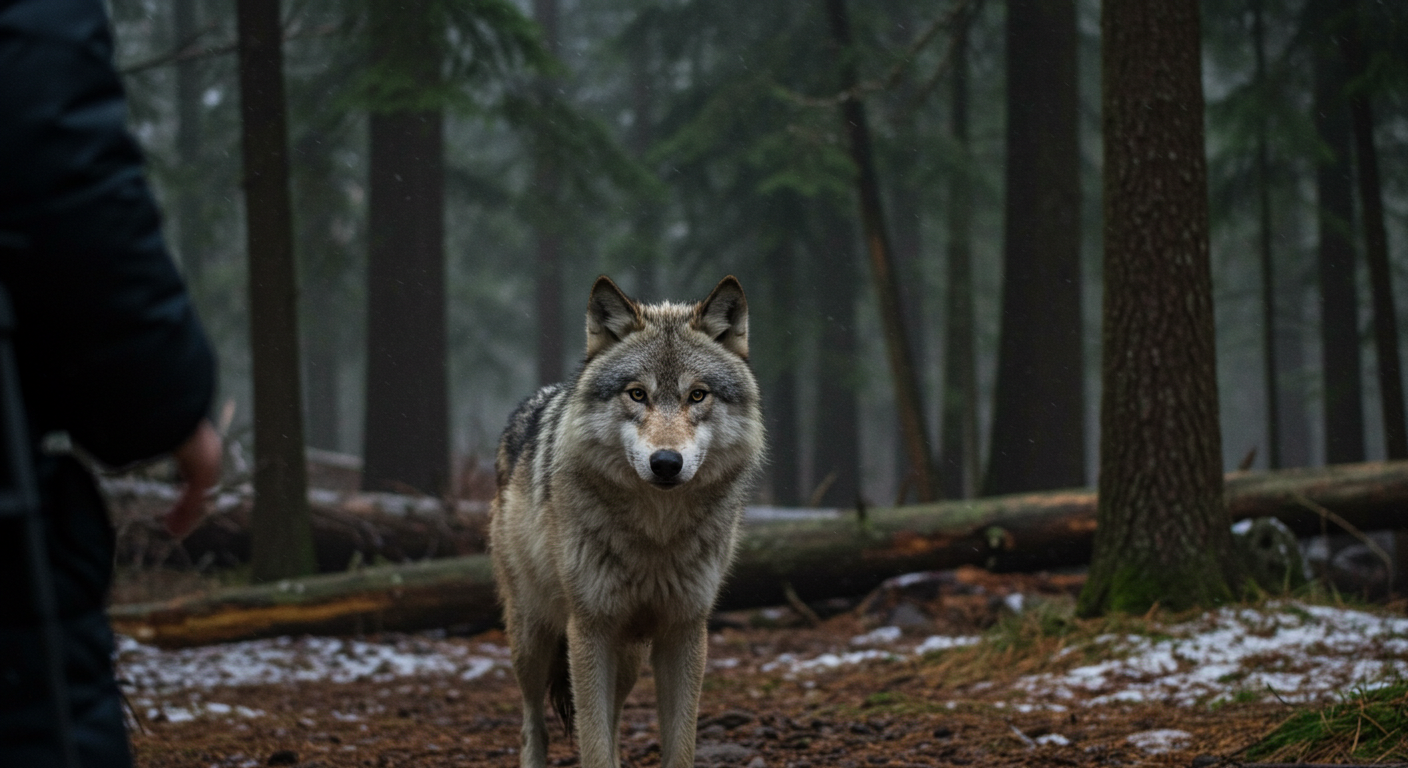
Understanding Wolf Behavior, Staying Safe, and Protecting Your Pets & Kids
Wolves in Colorado: What You Need to Know
I run a wilderness training school in Teller County near Cripple Creek, where we teach people real-world survival skills, including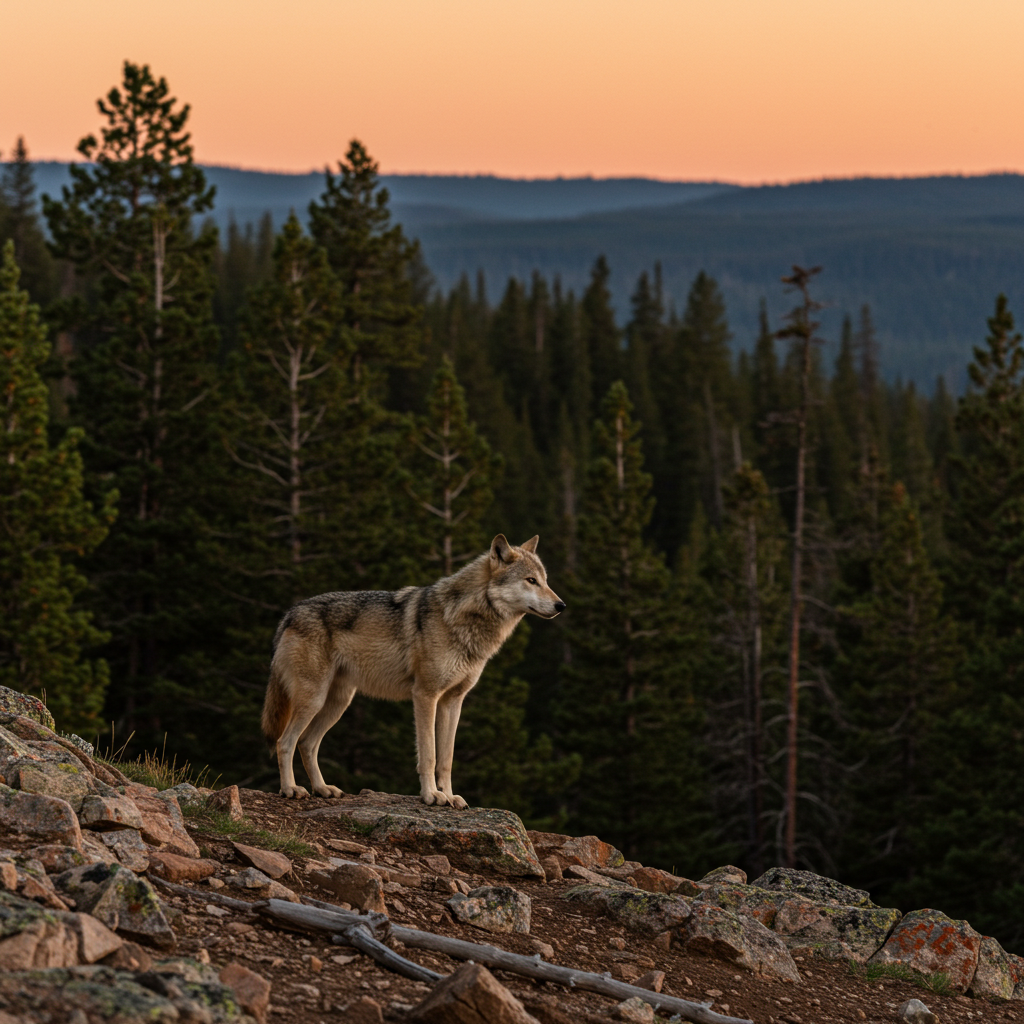 how to handle animal encounters. For years, wolves weren’t a concern in our training, but that’s changing. Wolves have been reintroduced to Colorado, and like it or not, they’re here to stay.
how to handle animal encounters. For years, wolves weren’t a concern in our training, but that’s changing. Wolves have been reintroduced to Colorado, and like it or not, they’re here to stay.
A grey wolf has recently been tracked in the area where we run our courses, adding to the list of predators already out there—black bears, mountain lions, and coyotes. Moose, while not predators, are also a serious threat. But today, we’re talking about wolves, how they operate, what to do if you encounter one, and how to protect yourself, your pets, and your kids.
Recently, a gray wolf was sighted in Teller County, raising concerns and curiosity among locals. Reports from KOAA News5 and KJCT8 News confirmed the wolf’s presence, with Colorado Parks and Wildlife monitoring its movements.
The International Wolf Center also shared the report, emphasizing the significance of the sighting and providing expert insights on wolf behavior and adaptation in Colorado.
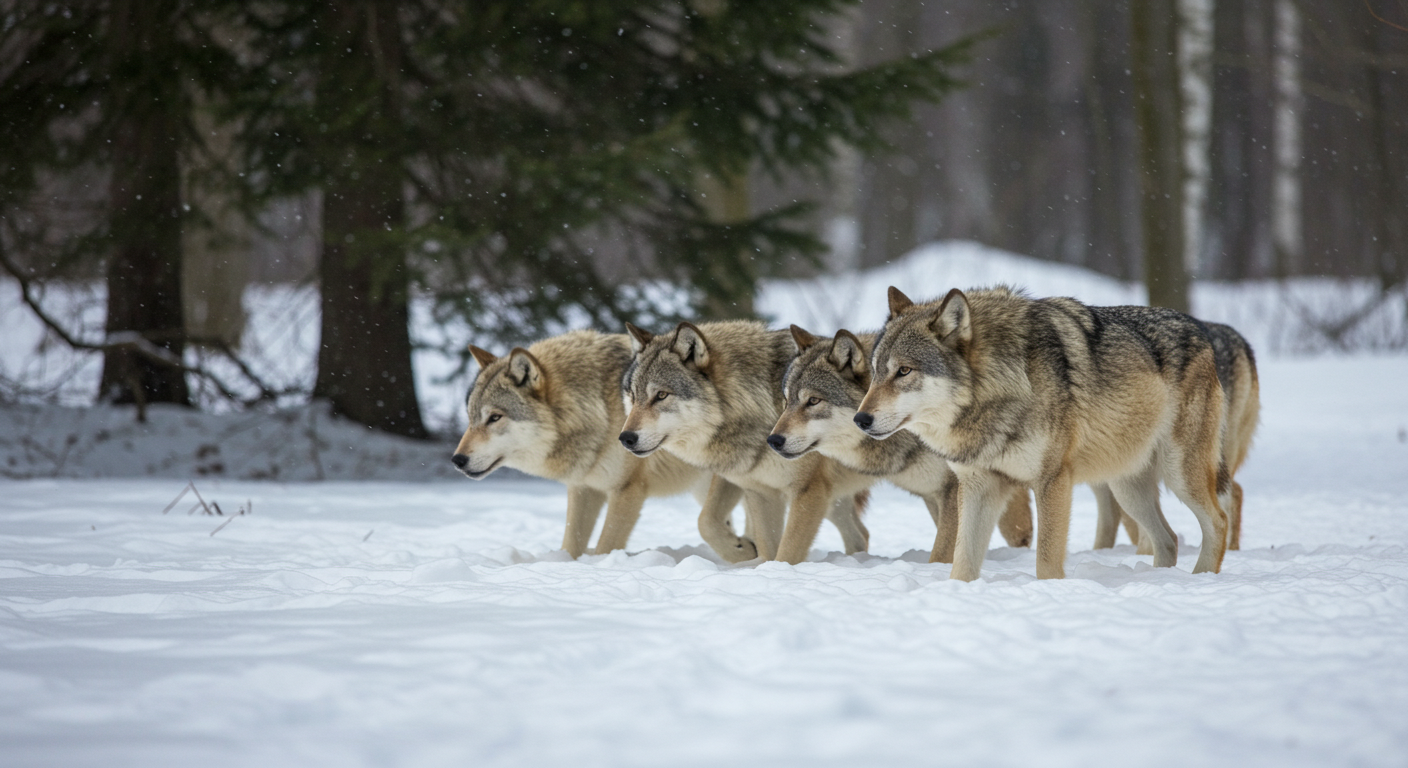
The Reality of Wolves in Colorado
Wolves are apex predators with no natural enemies outside of humans. While they generally avoid people, they are highly intelligent, social hunters that adapt quickly to their environment. Right now, they’re mostly targeting livestock, and as long as there’s plenty of it, people shouldn’t be too worried. But that also means livestock owners do have something to worry about.
Now, let’s be real, wolf attacks on humans are rare. They have a strong instinct to flee from people, and under normal circumstances, they aren’t looking to pick a fight. But attacks do happen, and they almost always come down to one of two things:
1. Wolves Get Too Comfortable Around People
This usually happens when some moron starts feeding them. It’s illegal to feed wildlife, but plenty of people still do it. They think they’re “helping” deer by leaving out food, or worse, they toss snacks to bears, which is just asking for trouble. And it’s only a matter of time before someone decides to feed a wolf, thinking they’re forming some kind of mystical bond. Spoiler alert: they’re not. Once wolves associate people with food, they lose their natural fear, and that’s when problems start. Feeding wild animals, no matter how cute it seems, puts them in danger. It disrupts their natural diet, leading to malnutrition and disease, makes them lose their instinct to hunt or forage, increases their risk of being hit by cars as they seek out human food, and often results in them being euthanized when they become too bold or aggressive around people. Don’t feed the wild animals! You know who you are! Stop it!
If you really want to see a wolf up close or bond with one, go to the Colorado Wolf and Wildlife Center in Teller County. They work with wolves in a controlled environment, and you can actually interact with them safely, without putting yourself or the animals in danger.
2. A Sick or Desperate Wolf Has No Other Option
If a wolf has rabies, all bets are off, it’s going to be aggressive. If natural food sources disappear, wolves will start looking elsewhere, which could mean pets, garbage, or in extreme cases, humans.
Teller County has plenty of livestock right now, so wolves aren’t likely to start targeting people anytime soon. But that doesn’t mean they won’t become bolder over time, especially if they start learning where the easy meals are.
My Perspective on Wolves & Expert Resources
I want to be upfront—I am not a wolf expert. I’ve spent some time researching wolves through books, studies, and the firsthand experiences of others, but I have never personally encountered one in the wild. My knowledge comes from research and practical survival training, not direct experience with wolves themselves.
If you want to learn from true wolf experts, I highly recommend visiting the Colorado Wolf and Wildlife Center in Teller County or finding a wolf sanctuary near you. These organizations have firsthand experience working with wolves and can offer deeper insights into their behavior, conservation, and interactions with humans.
The Reality of Wolf Attacks on Humans Worldwide
Wolf attacks on humans are extremely rare, but they do happen. While wolves generally avoid people, documented cases from Alaska, Canada, Russia, and parts of Europe provide insight into when and why attacks occur. Understanding real-world incidents can help separate fact from fearmongering and provide a clearer picture of how wolves interact with humans.
When and Why Do Wolf Attacks Happen?
Rabid Wolves
The majority of documented fatal wolf attacks worldwide have involved rabid wolves. Unlike North America, where rabies is less common, many attacks in Eastern Europe, Russia, and parts of Asia have been linked to rabies outbreaks. In these cases, wolves show no fear of humans, act erratically, and bite indiscriminately.
Habituated Wolves (Loss of Fear of Humans)
In Canada and Alaska, incidents have occurred where wolves became accustomed to human presence due to feeding or frequent exposure. This was the case in the 2010 wolf attack in Chignik Lake, Alaska, where a jogger was killed by a pack that had been feeding on garbage and showing increasingly bold behavior around people.
Food Scarcity and Starvation
In remote regions of Russia and India, wolf attacks have occasionally been linked to severe prey shortages. Wolves, like any predator, must eat to survive, and in cases of extreme starvation, they may become desperate enough to view humans as potential prey.
Documented Cases of Wolf Attacks on Humans
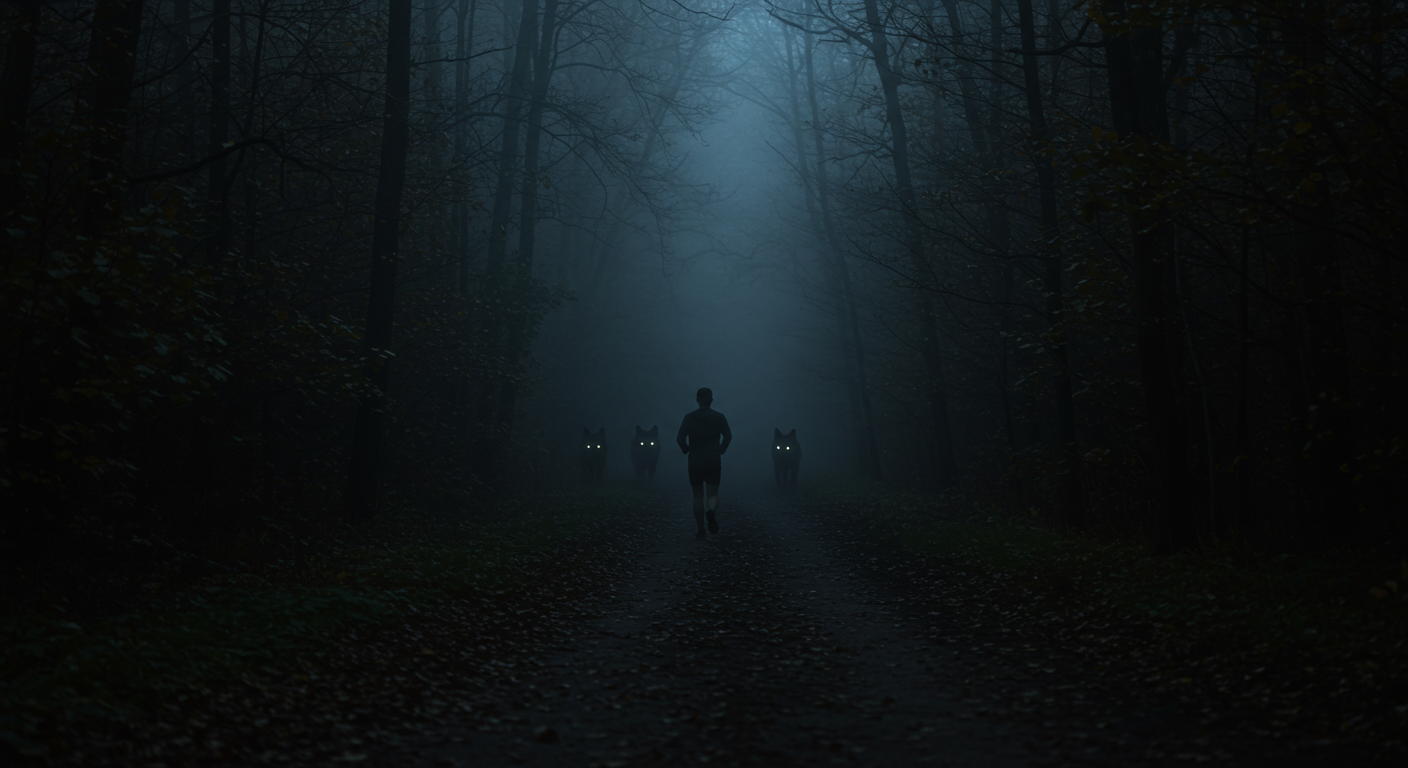
✔Chignik Lake, Alaska (2010) – A 32-year-old schoolteacher, Candice Berner, was killed while jogging near a remote village. Investigators found multiple wolves involved, and forensic evidence confirmed no rabies—instead, a pack had lost its fear of humans after frequenting garbage dumps.
✔Quebec, Canada (1996) – A woodcutter was attacked by a lone wolf in the woods. He managed to fight it off with his axe, later stating that the wolf showed no fear of humans, likely due to being fed by tourists in the area.
✔Kenton Carnegie, Saskatchewan (2005) – A 22-year-old university student was killed by a pack of wolves after they had been repeatedly fed at a mining camp. Experts confirmed the wolves had been conditioned to associate humans with food.
✔Russia (2000s-Present) – Several reports of wolf attacks in Siberia have been tied to harsh winters and reduced prey populations. In some cases, entire villages had to take organized defensive measures against desperate wolf packs.
✔India (Historical Accounts) – There are records of wolf predation on children in parts of India, mostly in rural areas where children wandered alone. These are not North American wolves, but it does highlight that wolves are capable of preying on humans under the right conditions.
Why This Matters for Colorado
So, what does this mean for wolves in Colorado? The likelihood of a healthy, wild wolf attacking a person is incredibly low, but if they become comfortable around humans or face extreme food shortages, that risk increases.
With wolves now in the state, preventing food habituation is key. That means:
- No feeding wolves—intentionally or accidentally (garbage, pet food, etc.).
- Keeping camps clean and secure to prevent scavenging.
- Educating people on how to react if wolves get too bold.
Wolves are not the mindless monsters some people make them out to be, but they also aren’t harmless wilderness companions. They are wild predators, and just like bears and mountain lions, they need to be respected and managed correctly to avoid future conflicts.
Signs of Wolf Activity
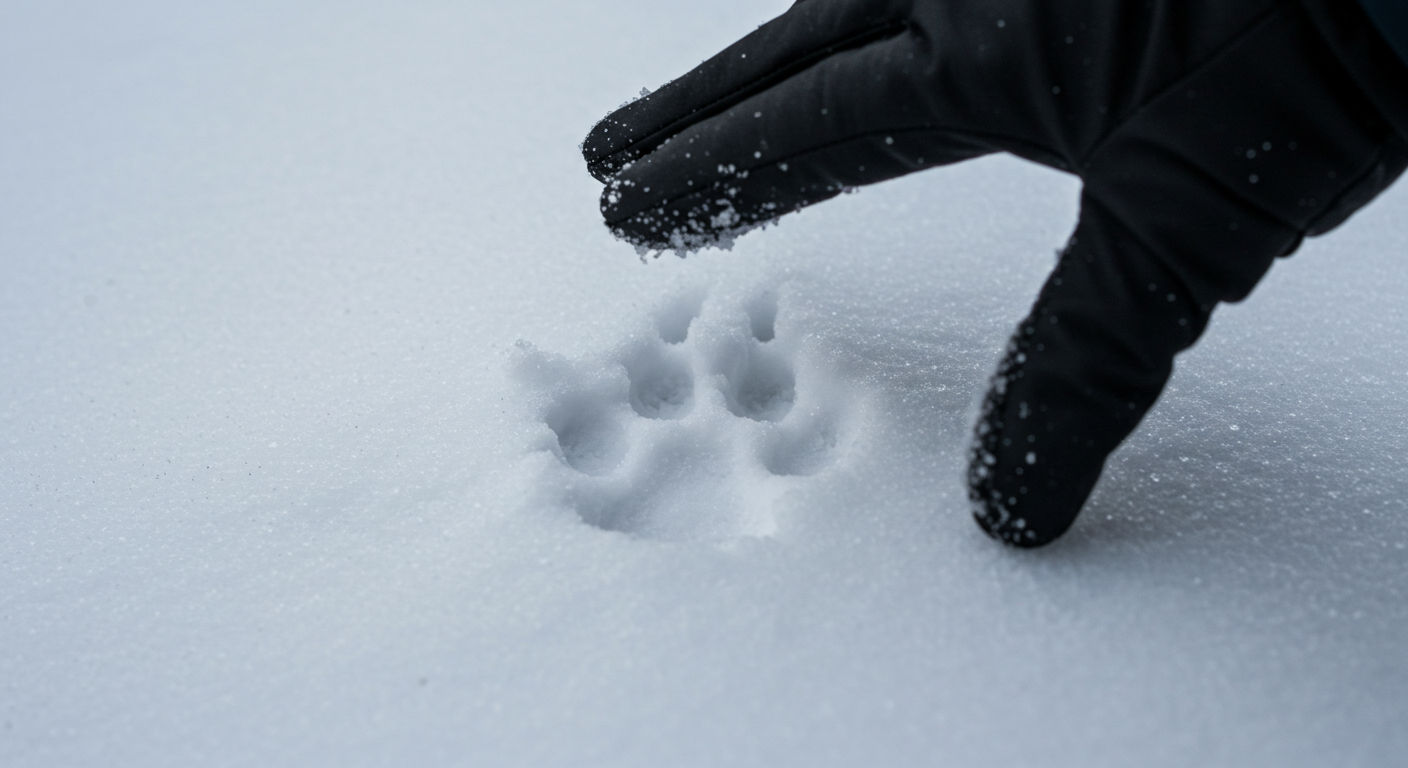
Before you ever see a wolf, the land around you may tell the story of their presence. Wolves are elusive, but they leave behind clear indicators that they are in the area. Recognizing these signs early can help you adjust your plans, avoid potential encounters, and stay alert. Whether you’re hiking, camping, or hunting, knowing how to identify wolf activity could mean the difference between a safe trip and a risky situation.
Key Signs to Watch For:
- Tracks: Wolf prints look similar to large dog tracks but are typically more elongated and symmetrical. Unlike domestic dogs, wolves place their hind feet directly in the front tracks, creating a straight-line pattern known as “single-tracking.”
- Scat (Droppings): Wolf scat is usually larger than coyote droppings and often contains fur, bones, and bits of undigested meat. Fresh scat is dark and moist, while older scat turns grayish-white as it dries.
- Kill Sites: A fresh wolf kill will have scattered remains, bite marks on bones, and minimal leftovers, wolves consume nearly everything. Unlike mountain lions, which drag prey and cover it with debris, wolves leave their kills more exposed.
- Howling & Vocalizations: Wolves use howls, yips, and growls to communicate across long distances. If you hear distant howls, it’s likely a pack communicating. If howls are close and follow you, wolves may be tracking movement in their territory.
- Scent Marking: Wolves urinate and defecate along territorial boundaries to warn other wolves to stay away. If you see concentrated scat or urine markings along trails or ridgelines, you may be inside a pack’s range.
- Fresh Tracks in Snow or Mud: Large wolf tracks in fresh snow or damp soil indicate recent movement. If you find multiple sets traveling in the same direction, you’re likely near an active hunting route.
- Unusual Silence: In wilderness areas filled with bird calls and small animal activity, sudden silence can indicate a large predator nearby, including wolves.
What to Do If You See These Signs:
- Take note of how fresh the signs are. If tracks or scat are fresh, wolves could be nearby.
- Avoid setting up camp near a kill site. This could draw scavengers or lead to territorial aggression.
- If you hear wolves howling near your location, stay alert and keep your group together.
Understanding these signs helps you stay aware of your surroundings and make informed decisions about your safety. If you know wolves are nearby, you can adjust your route, reinforce your camp, or take extra precautions before an encounter happens.
Wolf Behavior & Social Structure
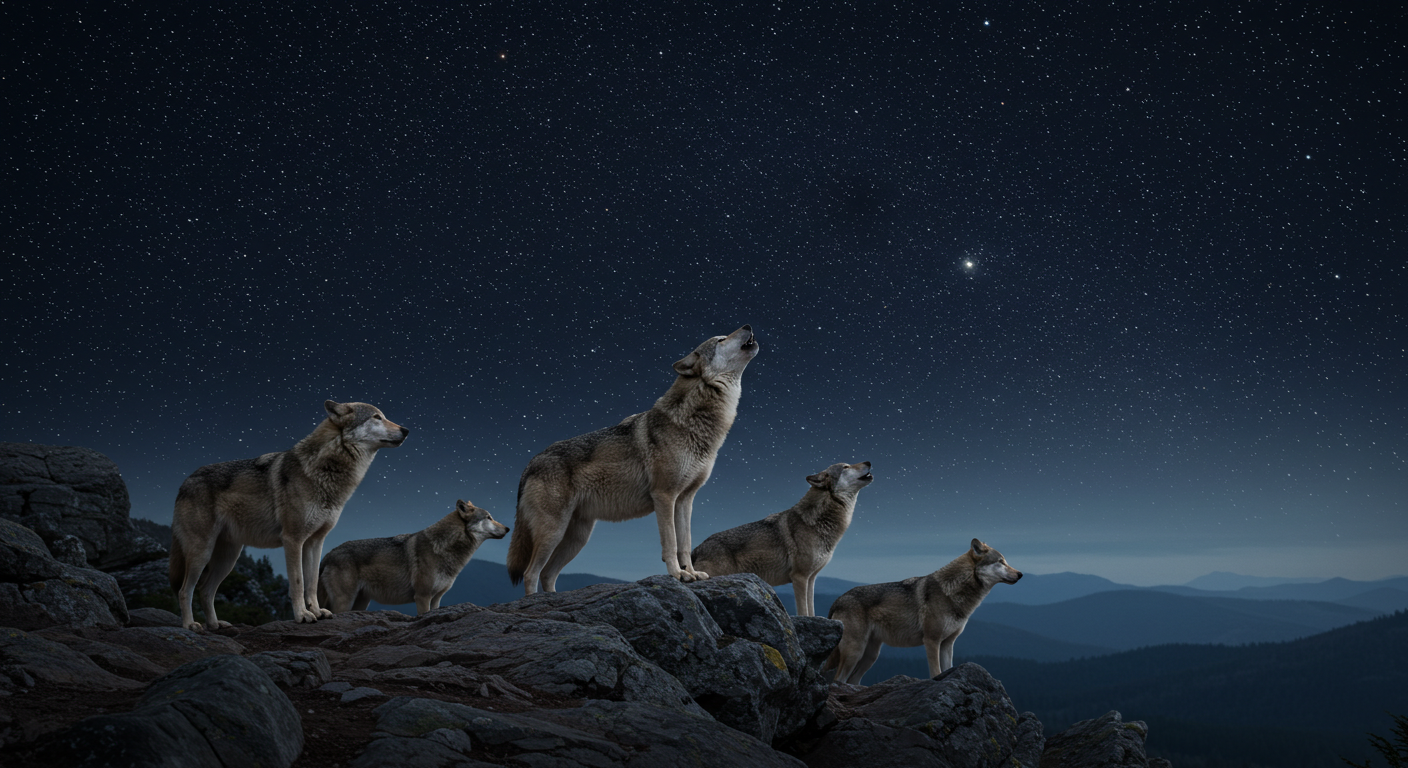
To understand how to react to a wolf encounter, you need to know how they operate. Wolves aren’t just another predator on the landscape. They are highly intelligent, social creatures that operate with precision and strategy. Unlike the solitary mountain lion, wolves thrive in packs, working together to hunt, defend their territory, and raise their young. Understanding how they communicate, move, and react to threats can give you an edge in a potential encounter. Whether you’re facing a lone wolf or an entire pack, knowing their behavior can mean the difference between a safe retreat and a dangerous confrontation.
Key Wolf Behavior Traits:
- Wolves are pack animals – They hunt together, raise pups together, and defend their territory as a group.
- A lone wolf is either a scout or a low-ranking member – If you see one wolf, others might be nearby.
- Wolves communicate constantly – They use body language, growls, whines, and howls to coordinate.
- They are endurance hunters – Unlike a mountain lion that ambushes, wolves run prey to exhaustion.
- They are territorial – They will kill other canines (including your dog) that enter their range.
Now, let’s get into what to do if you run into one.
What to Do If You Encounter a Wolf
If You See a Single Wolf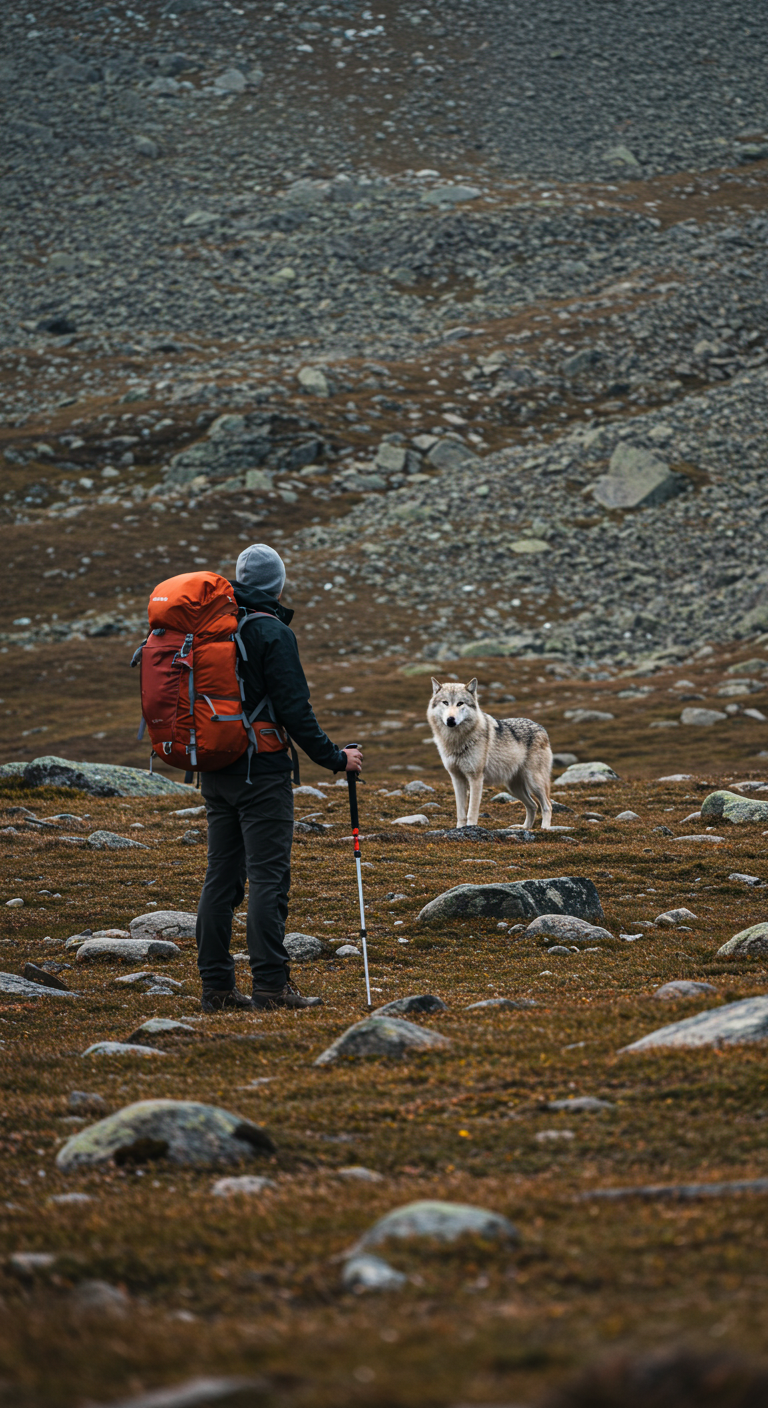
Coming face-to-face with a wolf in the wild can be an unsettling experience, but it’s important to remember that wolves are naturally wary of humans. A single wolf may be scouting, testing boundaries, or simply curious. Your reaction in those first few moments is critical. Show confidence, establish dominance, and make it clear that you are not easy prey. Wolves respect strength, and if you handle the encounter correctly, the wolf will likely move on without conflict.
- Stay calm and stand your ground. Wolves are curious, and a lone wolf might be investigating.
- Maintain eye contact. Let the wolf know you see it and are aware of its presence.
- Make yourself look big. Raise your arms, spread your jacket, and appear as large as possible.
- Speak firmly and loudly. Use a strong voice to deter the wolf and assert dominance.
- Back away slowly. Do not turn your back or run, this can trigger a chase.
- Pick up small children or pets. Wolves go for easy targets, so eliminate that option.
- Prepare to defend yourself. If the wolf shows aggression, be ready to fight with whatever you have.
What to Do If a Wolf Follows You
Most wolves will avoid direct encounters with humans, but if one starts trailing you, it’s assessing you for curiosity, territorial reasons, or something more concerning. A following wolf is not normal behavior and should be taken seriously.
If you notice a wolf shadowing you, hold your ground and assess the situation. Maintain confidence, make yourself look larger, and use the same deterrence tactics outlined above. A wolf that continues following despite these efforts could be testing your reaction, stay alert and be ready to escalate your response if necessary.
What to Do If You Encounter a Pack of Wolves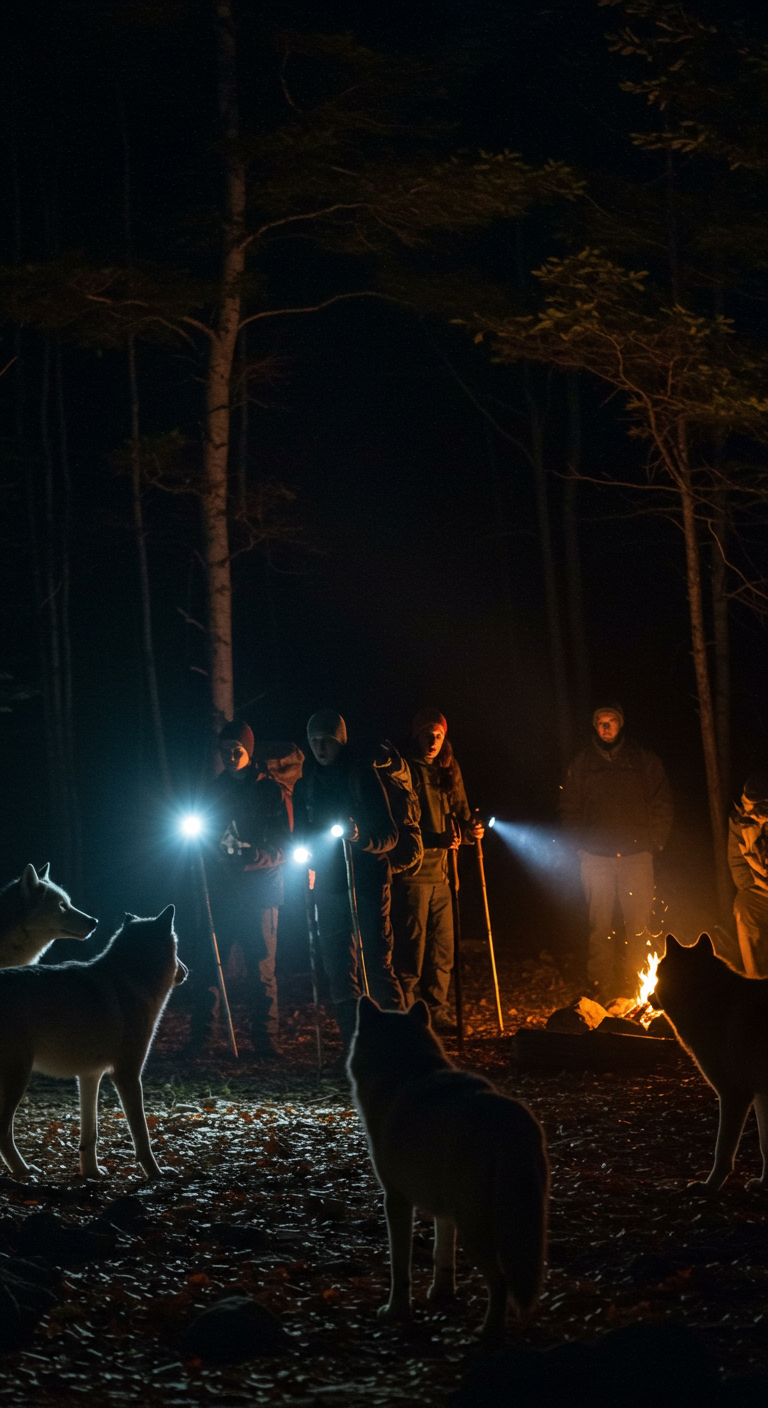
Facing a lone wolf is one thing, but encountering a pack is an entirely different level of danger. Wolves are social predators that hunt cooperatively, meaning they will work together to assess threats and exploit weaknesses. If you find yourself in the presence of multiple wolves:
- Do not panic. Wolves can sense fear, and panicking makes you look weak and vulnerable.
- Stand tall and group together. If you’re with others, stand back-to-back to cover all angles.
- Maintain eye contact with the closest wolf. Wolves respect confidence and dominance.
- Make noise and throw objects near the wolf. Avoid hitting the wolf directly, as it may provoke aggression.
- Do not run. Running triggers their prey drive.
- Use fire as a deterrent. If you can, quickly light a torch or small fire.
- Find higher ground or a defensible position.
- Climb a tree if possible.
If a pack attacks, fight with everything you have. Target the eyes, nose, or throat. Injuring one wolf may cause the rest to back off.
What to Do If a Wolf Attacks
If a wolf actually lunges, you have to fight for your life. When a wolf attacks, there is no room for hesitation. You must be ready to fight with everything you have. Wolves are relentless hunters that target weak or injured prey, and if they see you as an easy kill, they won’t back off. Your goal is to make the fight as difficult and painful for them as possible. Unlike bears, wolves don’t rely on brute force alone; they use coordinated attacks, aiming to drag their prey down. If you go down, getting back up becomes nearly impossible. Survival depends on staying on your feet, protecting vital areas, and using any weapon available to inflict damage and make them reconsider.
- Stay on your feet. Wolves attack by biting and pulling down prey. If you fall, you’re in trouble.
- Protect your neck and face. Use your arms to shield vital areas.
- Use a weapon. A knife, a rock, even a sturdy stick, aim for the eyes, nose, and throat.
- If you have fire, use it. A flaming stick or even bright sparks from a fire starter can be enough to make wolves hesitate.
- Do not stop fighting. Wolves rely on their prey giving up. Don’t!
Firearms and Defensive Tools
When it comes to self-defense in wolf country, your best strategy is prevention and deterrence, but having the right tools can make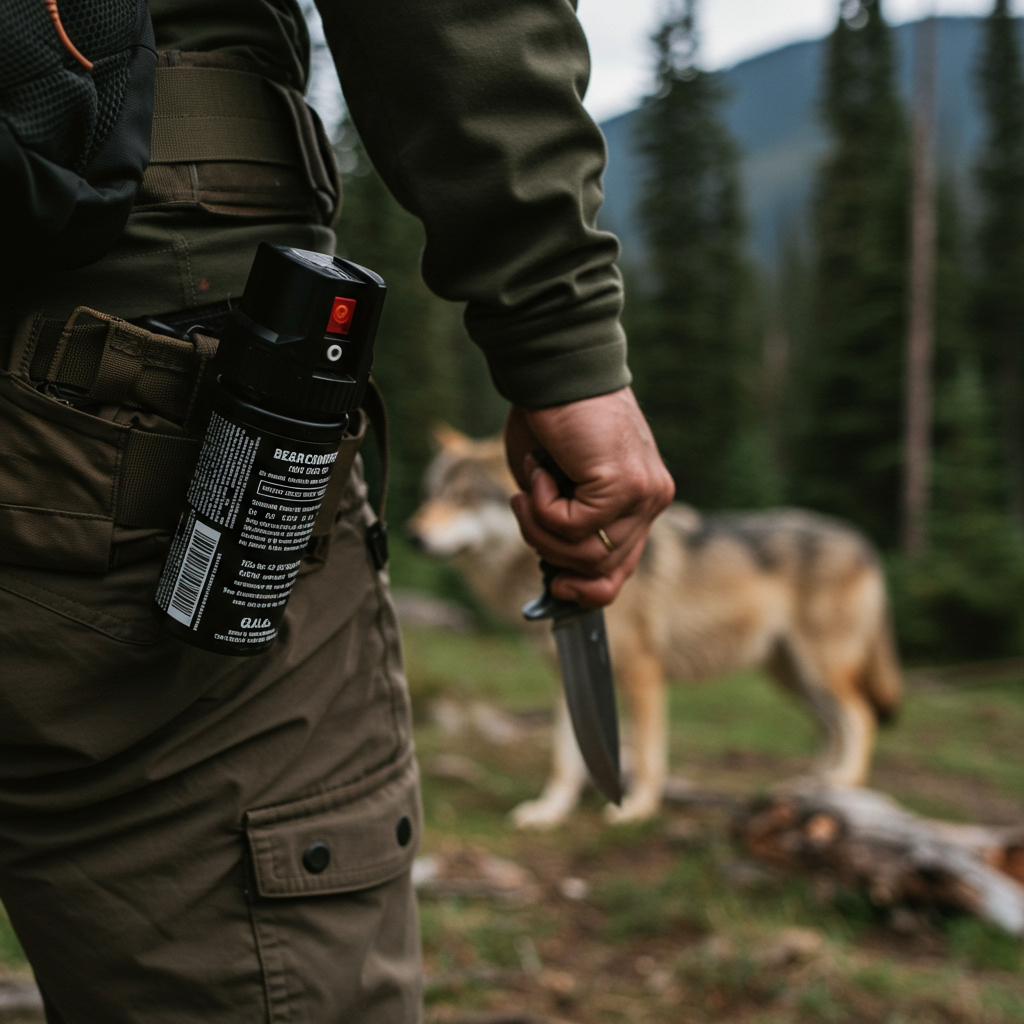 all the difference if an encounter escalates. While wolves generally avoid conflict with humans, non-lethal deterrents and, when legal, firearms, can provide an additional layer of protection.
all the difference if an encounter escalates. While wolves generally avoid conflict with humans, non-lethal deterrents and, when legal, firearms, can provide an additional layer of protection.
Non-Lethal Deterrents
If you’re not carrying a firearm or prefer non-lethal methods, these tools can discourage a wolf from getting too close:
- Bear Spray – Highly effective if deployed correctly, but has a limited range (usually around 30 feet). Only use it if the wolf is showing aggression and within range.
- Air Horns or Whistles – The loud, sudden noise can startle wolves and send them running. Keep one easily accessible.
- Pepper Ball Guns – These are used by some backcountry travelers as a deterrent. They release a cloud of capsaicin powder that irritates the wolf’s senses.
- Bright Flashlights or Strobes – Wolves rely heavily on their night vision. A high-lumen flashlight or strobe can be disorienting in low-light conditions.
- Fire as a Tool – If camping, keeping a controlled fire burning at night can deter wolves from approaching. If confronted, waving a flaming stick can be a last-resort intimidation method.
Firearms Considerations
For those legally carrying a firearm in the backcountry, it’s important to understand when and how to use it responsibly. Shooting a wolf should always be a last resort. If a wolf is charging, displaying clear aggression, or actively attacking you, don’t hesitate, defend yourself.
- Handguns & Rifles – A .357 Magnum or higher is generally recommended for large predators. For rifles, a .223 or larger caliber can be effective.
- Shotguns with Slugs or Buckshot – For those who prefer a shotgun, buckshot or slugs provide stopping power at close range.
- Warning Shots – If legal in your area, a well-placed warning shot into the ground may startle the wolf and prevent escalation.
If you choose to carry a firearm, be aware of local regulations and always practice safe, responsible use. The goal is always deterrence first, defense second, and lethal force as a last resort.
How to Wolf-Proof a Campsite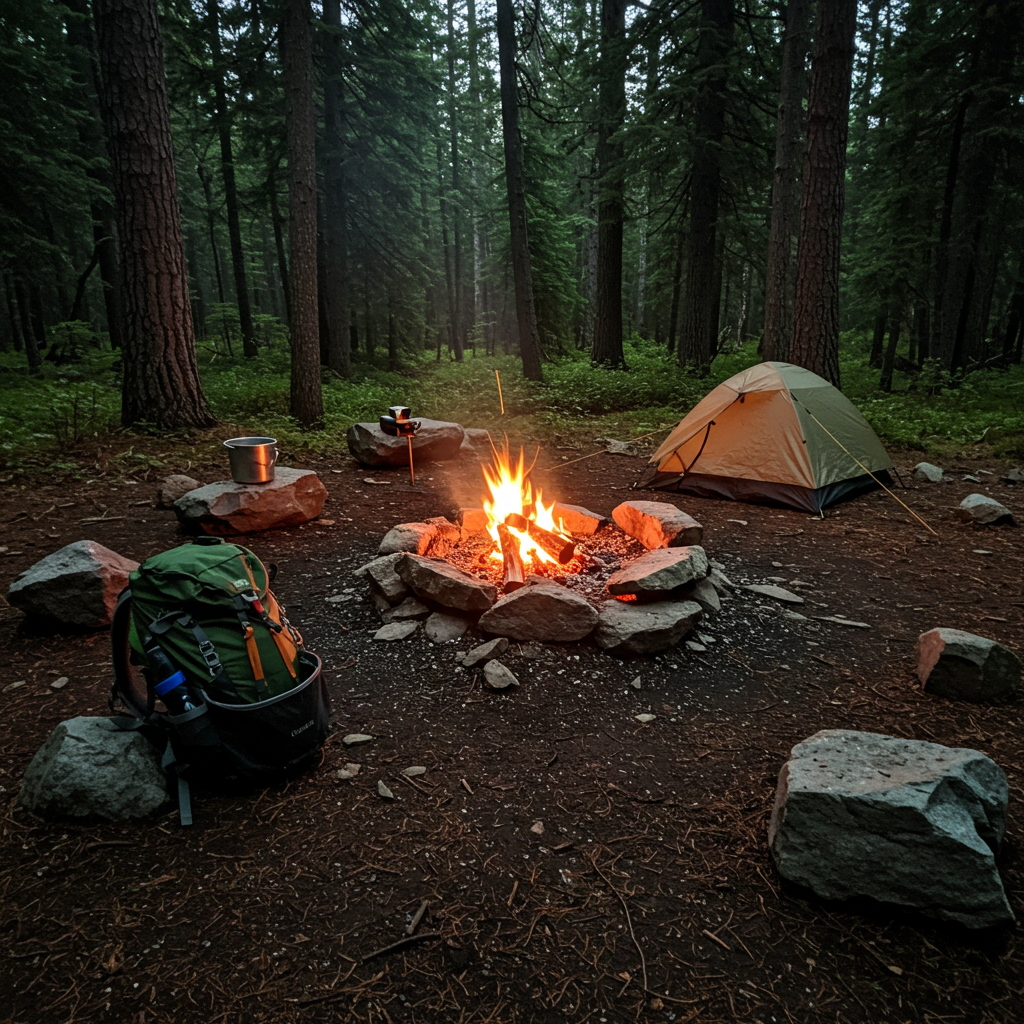
If you’re camping in wolf country, taking a few precautions can reduce the chances of an unwanted encounter. Wolves aren’t generally interested in people, but they are opportunists. If they catch the scent of food or find an easy meal, they won’t pass it up. While direct attacks are rare, you don’t want wolves investigating your camp, getting comfortable around humans, or associating campsites with food.
By minimizing scent, securing food, and setting up proper deterrents, you can keep your camp off their radar.
Smart Camp Location Selection
- Avoid fresh wolf sign. If you see fresh tracks, scat, or signs of a recent kill, move on. Wolves patrol their territory frequently, and setting up near their route increases the chances of an encounter.
- Use natural barriers. Instead of avoiding cover altogether, camp near rock outcroppings, thick brush, or trees that create a defensible position. This helps funnel movement so you can control your surroundings instead of being exposed on all sides.
- Keep sight lines open where possible. While full clearings aren’t realistic, choose a spot where you have a good view of approaching areas, especially trails leading into camp.
Food & Scent Management
- Store food properly. Wolves have a powerful sense of smell, and improperly stored food is an invitation. Use bear-proof containers or hang food at least 12 feet off the ground.
- Cook away from your sleeping area. If possible, set up a separate cooking site at least 100-200 feet from where you sleep. You don’t want lingering food smells drawing wolves into your tent.
- Do not leave food scraps behind. Pack out all food waste, and don’t bury or burn leftovers. Wolves and scavengers will dig it up, and that increases human-wolf interactions over time.
- Keep scented items contained. Even non-food items like toothpaste, deodorant, or lotion can attract curious wildlife. Store them with your food.
Defensive Measures & Deterrents
- Keep a fire burning when possible. Wolves have a natural caution around fire, and a controlled campfire can serve as a deterrent. Just be mindful of fire restrictions and keep it properly managed.
- Use light and sound deterrents. Motion-activated lights, trip alarms, or even a simple set of cans on a string around camp can give you an early warning. Wolves are skittish around unexpected noise and light.
- Keep deterrents close. Bear spray, an air horn, or even a powerful flashlight can stop a curious wolf from coming closer.
Stay Alert at Night
- Check your surroundings before bed. Make sure no food is left out, and scan the area for fresh tracks or signs of wildlife movement.
- Listen for howls or movement. If wolves are nearby, you’ll often hear them before you see them. If you hear repeated howls getting closer, be extra cautious stepping out of your tent.
- Have a plan if a wolf enters camp. If one approaches, stand your ground, make noise, and use deterrents just as you would in a daytime encounter.
Taking the time to set up camp properly and maintain awareness keeps you from attracting unnecessary attention. The best way to keep wolves away? Make them realize your camp isn’t worth their time.
What to Do If You See a Wolf Pup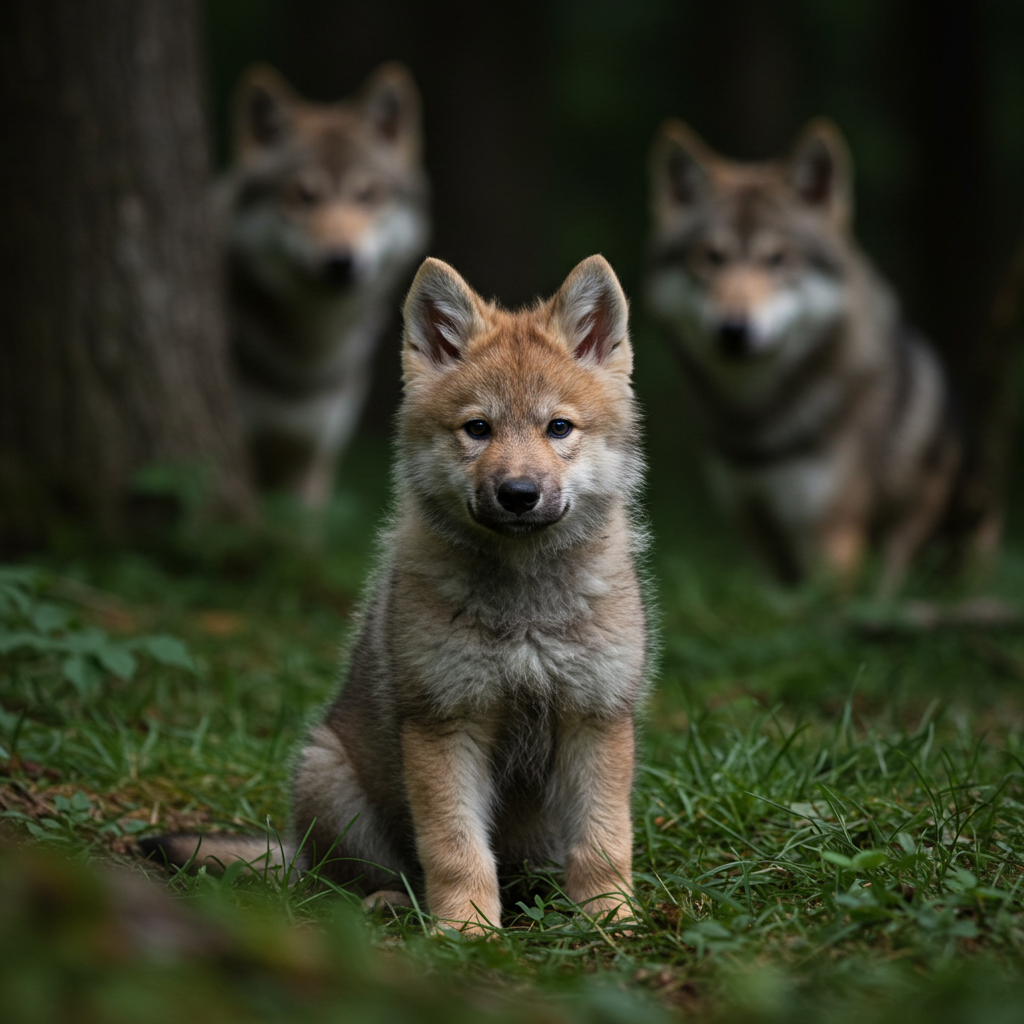
This one is simple: DO NOT APPROACH. Wolf pups might look harmless, but they are never alone. If you come across a pup in the wild, assume the pack is nearby and watching. Wolves are fiercely protective parents, and any interaction, no matter how well-intentioned, can trigger an aggressive response. Even if you don’t see the adults, they see you, and they won’t hesitate to defend their young. The safest move is to leave the area immediately without turning your back or running, ensuring you don’t appear as a threat or as prey.
- If you see a wolf pup, the pack is nearby. Wolves are extremely protective of their young.
- Leave immediately, but do not run. A pack will be watching, and you don’t want to look like prey.
Keeping Your Pets & Kids Safe on Hikes
Wolves don’t differentiate between pets and wild animals, they see other canines as competition and small children as potential prey. If you’re hiking, camping, or living in wolf country, awareness and prevention are key. Keeping dogs close, avoiding areas with recent wolf activity, and understanding how to respond to an encounter can mean the difference between safety and tragedy. While wolf attacks on children are extremely rare, their unpredictable movements can trigger a predator’s instinct. Supervision and education are the best ways to keep both pets and kids safe in wolf territory.
Dogs
To a wolf, a dog is either competition or an easy target. How you handle encounters can mean the difference between coexistence and conflict.
- Hikers: Keep dogs leashed on trails. Wolves see lone canines as intruders and may attack.
- For those living in wolf country: Keep dogs close and supervised, especially at night. Farm dogs that roam are at higher risk.
- Avoid areas with recent wolf activity. If you see fresh tracks, scat, or reports of wolves, be cautious.
- If camping, use fire responsibly as a deterrent. Wolves naturally avoid flames, and a well-maintained campfire can provide an extra layer of security.
- Be ready to fight. If a wolf grabs your dog, go after it. Wolves don’t expect a fight from humans.
Kids
Wolves rarely attack children, but their small size and unpredictable movements can trigger curiosity or predatory instincts. Awareness and supervision are key to safety.
- Keep kids close at all times. While wolf attacks on children are extremely rare, a lone child is more vulnerable.
- Educate them on what to do. Teach them not to run, to stand their ground, and to stay with adults.
- Avoid hiking at dawn and dusk. Wolves are most active during these times, increasing the chance of an encounter.
Legal Considerations for Self-Defense Against Wolves in Colorado
Wolves are a protected species in Colorado, and there are strict regulations regarding when and how you can legally defend yourself, your pets, or your livestock. While personal safety comes first, using lethal force against a wolf is only legally justifiable under specific circumstances. Failing to follow the law can lead to severe penalties, including fines and legal action. Here’s what you need to know.
Colorado Parks & Wildlife – Wolves
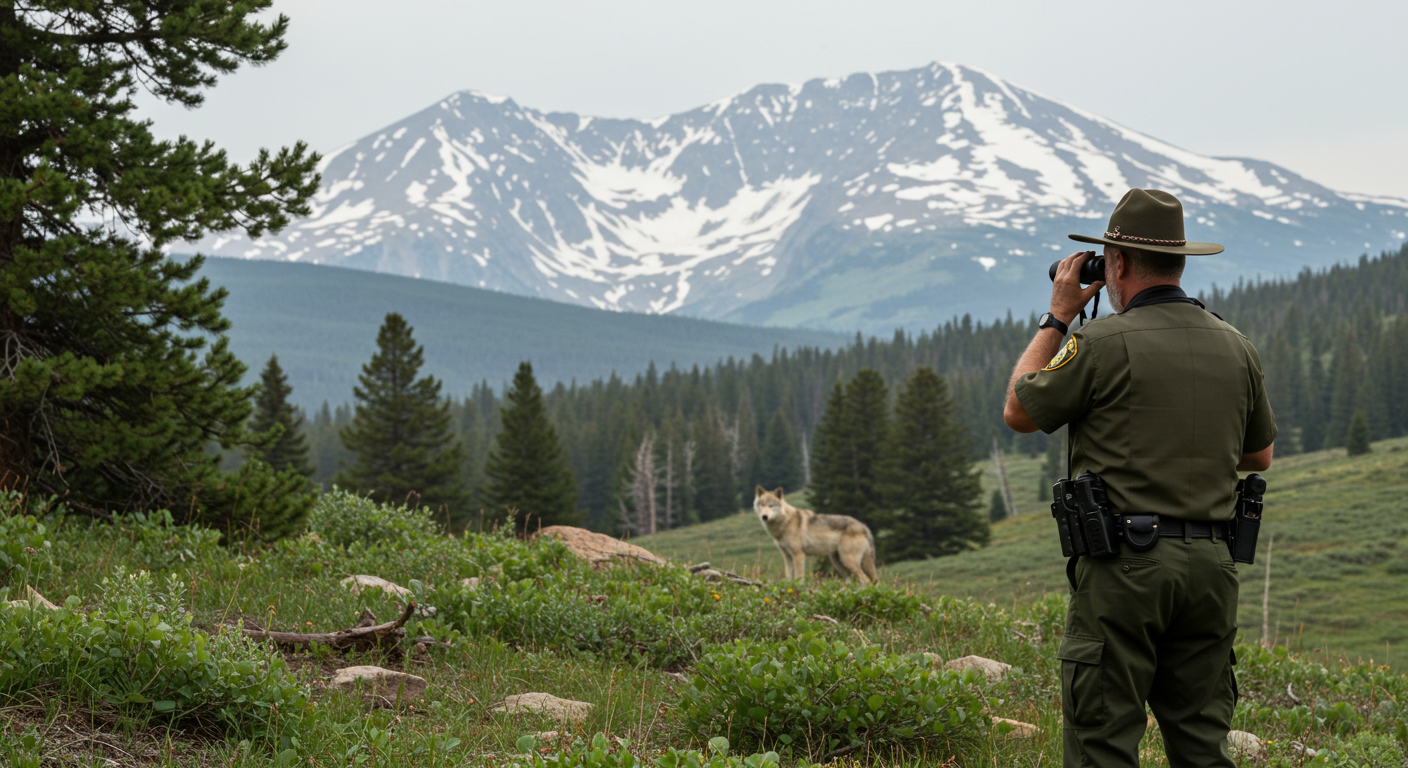
Can You Kill a Wolf in Self-Defense?
Under Colorado law, you may only kill a wolf if it poses an immediate and direct threat to human life. This means:
- The wolf must be actively attacking you or another person.
- You must have exhausted all other reasonable means to deter the attack before resorting to lethal force.
- Killing a wolf to prevent future attacks or simply because it feels threatening is not legal.
If you do kill a wolf in self-defense, you are required to report it to Colorado Parks & Wildlife (CPW) immediately. Failure to do so can result in criminal charges.
Protecting Your Pets from Wolves
Wolves do not differentiate between wild animals and domestic pets, and attacks on dogs have already been documented. However, Colorado law does not currently allow you to kill a wolf solely for attacking a pet.
- If a wolf is actively attacking your pet, non-lethal deterrents (bear spray, air horns, throwing objects, etc.) should be used first.
- If a wolf kills or injures your pet, report it to Colorado Parks & Wildlife immediately.
Since wolves view dogs as competition, hikers and pet owners should be aware that wolves are more likely to attack an off-leash dog than a human. Keeping dogs close and using deterrents is the best way to avoid conflicts.
Protecting Livestock from Wolves
Because wolves are known livestock predators, Colorado has specific guidelines for ranchers:
- You cannot legally kill a wolf for attacking livestock unless you have explicit state approval.
- CPW compensates ranchers for livestock losses caused by wolves, but killing a wolf in retaliation is not allowed.
- Livestock owners are encouraged to use non-lethal deterrents, such as guard animals, fencing, and alarm systems.
In the event of a wolf attack on livestock, documentation is critical. Ranchers should:
- Take photos of injuries or remains to verify the attack.
- Report the incident immediately to Colorado Parks & Wildlife.
CPW Livestock Compensation Program - Work with CPW to determine eligibility for compensation.
Federal vs. State Laws on Wolves
Wolves in Colorado were reintroduced under state management, but federal protections still apply in certain areas. The Endangered Species Act (ESA) previously covered wolves in most of the U.S., but they have been delisted in some regions. However, illegal killing of a wolf could still lead to federal charges in addition to state penalties if it occurs in a federally protected zone.
Endangered Species Act (ESA) Information
Key Takeaways:
✔ Lethal force is only legal if a wolf is actively attacking a human.
✔ Killing a wolf to protect pets or livestock is NOT legal in most cases.
✔ If a wolf is killed in self-defense, it MUST be reported to CPW immediately.
✔ Non-lethal deterrents are the primary legal method of wolf conflict prevention.
✔ Livestock owners should document wolf attacks and report them for compensation.
Final Thoughts on Wolves in Colorado
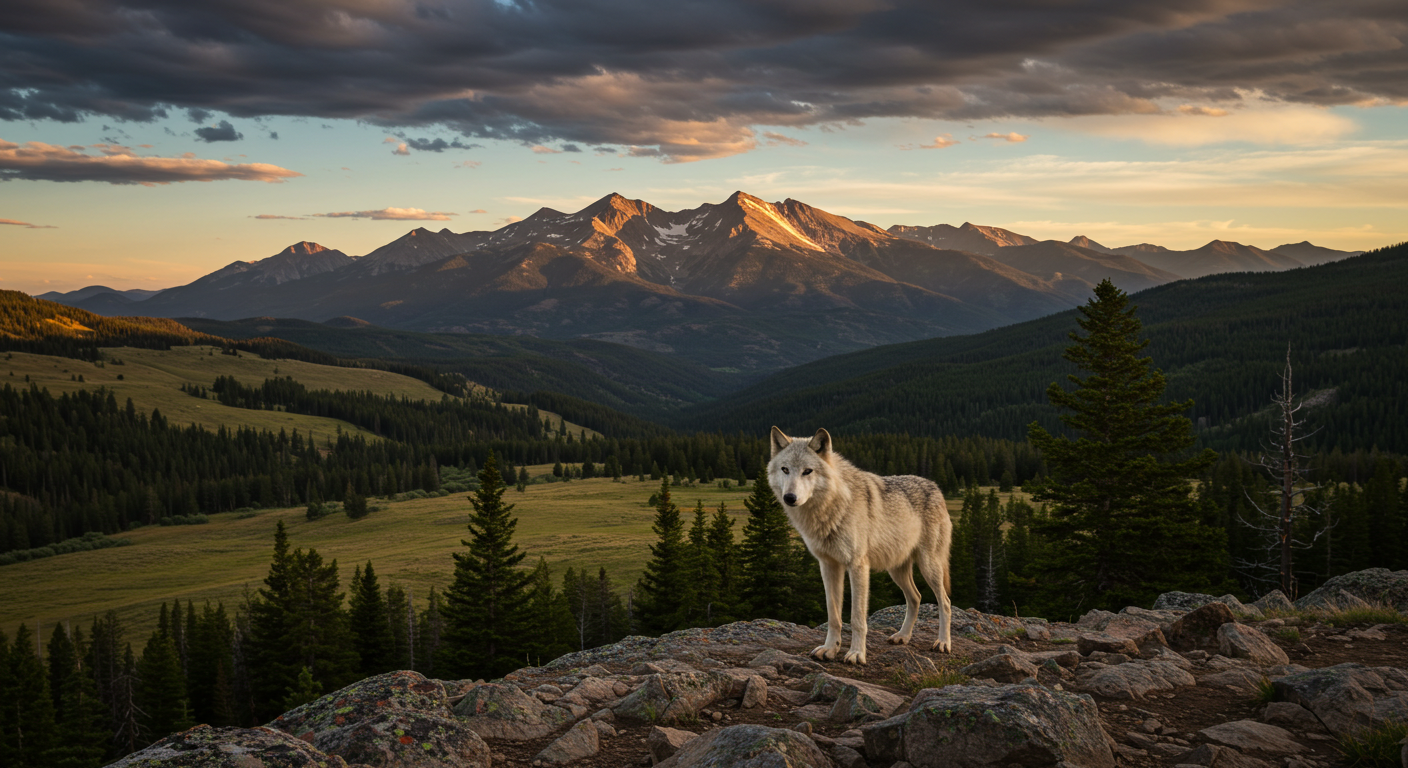
With wolves now confirmed in the area where I run my courses, this is just another risk to prepare for. At The Survival University, we’ve always trained for bear. mountain lion and moose encounters, but wolves are a new factor we all need to take seriously.
As wolf populations grow in Colorado, reports of livestock losses are increasing. Wolves are opportunistic hunters, and if natural prey declines, they may turn to easier targets, including pets. In other regions where wolves have been reintroduced, human-wolf conflicts have risen when food sources become scarce. Managing interactions early and preventing food habituation will be key to minimizing future issues.
That said, this isn’t about fear, it’s about being prepared. If you’re spending time in the wilderness, know what to do, carry the right tools, and stay aware of your surroundings.
Want to Be Prepared for the Wild?
At The Survival University, we teach hands-on survival skills that prepare you for real-world animal encounters, wilderness survival, and land navigation. With wolves back in Colorado, knowing how to read wildlife behavior and respond correctly is more important than ever. Whether you’re hiking, camping, or exploring remote backcountry, our courses will help you stay safe, stay aware, and stay prepared.
- 3 Day Survival Basics 101 – 5 Day Survival Basics 101 – Learn what to do in real-world wildlife encounters, including bears, mountain lions, and wolves. These courses focus on situational awareness, camp safety, and how to react if you cross paths with a predator while also covering firecraft, shelter, and water purification.
- Introduction to Animal Tracking – Recognize tracks, scat, and animal signs to increase your awareness of wildlife before an encounter happens. Great for hikers, hunters, and anyone wanting to read the land more effectively.
- Kids and Family: Spirit of Adventure – A fun, hands-on course where kids and parents learn basic tracking, outdoor safety, and how to respond to wildlife in a way that builds confidence in nature.
- 50 Day Immersion Course – Spend weeks living in the wilderness, tracking animals, experiencing wildlife firsthand, and sharpening your survival skills in an environment few ever get to see.
Be prepared. Train with us.
The images in this article are AI-generated for illustration purposes. The wolf sighting described is real, but because The Survival University does not have the legal rights to use the actual photographs, AI-generated images were used to visually support the story while respecting copyright laws.
About the Author
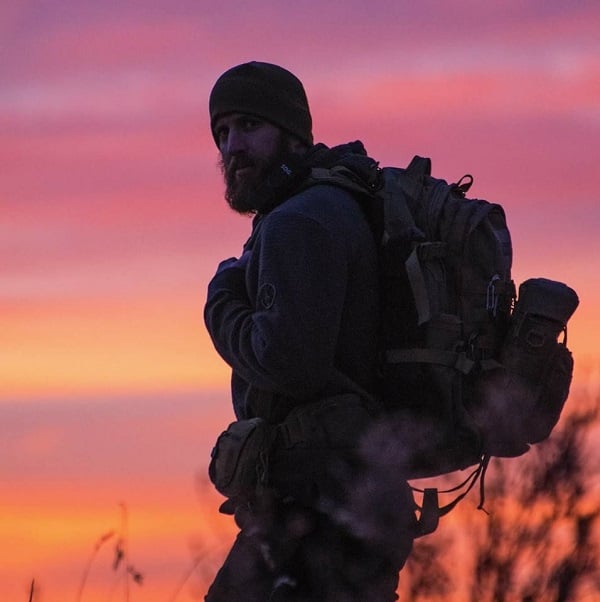 Jason Marsteiner is the founder and lead instructor at The Survival University, where he has dedicated his life to teaching practical survival skills that apply to both the backcountry and everyday emergencies. With years of hands-on experience in wilderness survival, land navigation, and emergency preparedness, Jason understands that true readiness isn’t about gear—it’s about knowledge and training.
Jason Marsteiner is the founder and lead instructor at The Survival University, where he has dedicated his life to teaching practical survival skills that apply to both the backcountry and everyday emergencies. With years of hands-on experience in wilderness survival, land navigation, and emergency preparedness, Jason understands that true readiness isn’t about gear—it’s about knowledge and training.
Born and raised in the mountains of Colorado, Jason’s background in wilderness survival was forged through real-world experience. He has trained extensively in austere environments, from the forests of Missouri to the mountains of Colorado to the desert of Arizona, and even in the jungles of Costa Rica, relying on minimal tools to survive. He holds certifications in Wilderness First Responder (WFR) and SAR tracking and has taught countless students how to stay alive when 911 isn’t an option.
Jason doesn’t believe survival training is just for hardcore adventurers—it’s for everyone. Whether you’re a day hiker, a city dweller, or a parent wanting to protect your family, the ability to act in an emergency can mean the difference between life and death. His goal is simple: to make sure you don’t freeze when it matters most and to get everyone back home safe.
When Jason isn’t teaching survival courses, he’s designing knives, mentoring, or simply spending time in the city just like you. Whatever he is doing, he is always honing the skills that turn fear into confidence.
Leave a Comment
What to Do When You Encounter a Wolf in the Wild
Wolves are neither villains nor heroes—they’re survivors. Explore their role in nature, the myths that surround them, and what we can learn from their resilience.
Winter Survival in the Colorado Rockies — Part 8: Wildlife Awareness and Safety
Learn how to stay safe and warm in the Colorado Rockies this winter. Discover practical tips for preventing and treating cold-weather injuries like hypothermia, frostbite,...

